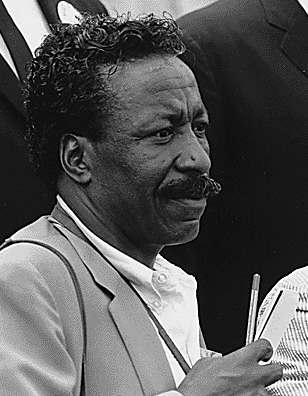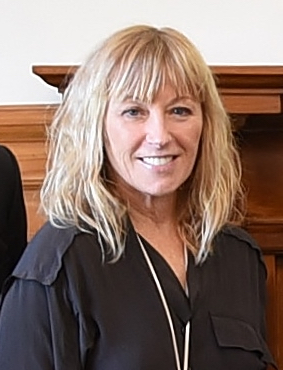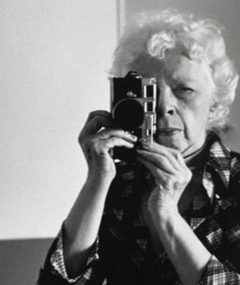Related Research Articles

Gordon Roger Alexander Buchanan Parks was an American photographer, composer, author, poet, and film director, who became prominent in U.S. documentary photojournalism in the 1940s through 1970s—particularly in issues of civil rights, poverty and African Americans—and in glamour photography. He is best remembered for his iconic photos of poor Americans during the 1940s, for his photographic essays for Life magazine, and as the director of the films Shaft, Shaft's Big Score and the semiautobiographical The Learning Tree.

Richard Avedon was an American fashion and portrait photographer. He worked for Harper's Bazaar, Vogue and Elle specializing in capturing movement in still pictures of fashion, theater and dance. An obituary published in The New York Times said that "his fashion and portrait photographs helped define America's image of style, beauty and culture for the last half-century".

Charles Sheeler was an American artist known for his Precisionist paintings, commercial photography, and the avant-garde film, Manhatta, which he made in collaboration with Paul Strand. Sheeler is recognized as one of the early adopters of modernism in American art.

Cynthia Morris Sherman is an American artist whose work consists primarily of photographic self-portraits, depicting herself in many different contexts and as various imagined characters.

The Amon Carter Museum of American Art (ACMAA) is located in Fort Worth, Texas, in the city's cultural district. The museum's permanent collection features paintings, photography, sculpture, and works on paper by leading artists working in the United States and its North American territories in the nineteenth and twentieth centuries. The greatest concentration of works falls into the period from the 1820s through the 1940s. Photographs, prints, and other works on paper produced up to the present day are also an area of strength in the museum's holdings.

Laura Gilpin was an American photographer.

The Modern Art Museum of Fort Worth is an art museum of post-World War II art in Fort Worth, Texas with a collection of international modern and contemporary art. Founded in 1892, The Modern is located in the city's cultural district in a building designed by architect Tadao Ando which opened to the public in 2002. The museum is accredited by the American Alliance of Museums and holds a permanent collection with more than 3,000 works of art.

Lorna Simpson is an American photographer and multimedia artist whose works have been exhibited both nationally and internationally. In 1990, she became one of the first African-American woman to exhibit at the Venice Biennale. She came to prominence in the 1980s and 1990s with photo-text installations such as Guarded Conditions and Square Deal that questioned the nature of identity, gender, race, history and representation. Simpson continues to explore these themes in relation to memory and history using photography, film, video, painting, drawing, audio, and sculpture.

Lisette Model was an Austrian-born American photographer primarily known for the frank humanism of her street photography.

Zoe Strauss is an American photographer and a nominee member of Magnum Photos. She uses Philadelphia as a primary setting and subject for her work. Curator Peter Barberie identifies her as a street photographer, like Walker Evans or Robert Frank, and has said "the woman and man on the street, yearning to be heard, are the basis of her art."

Laura Cunningham Wilson is an American photographer. She has completed seven books of photography and text: Watt Matthews of Lambshead (1989), Hutterites of Montana (2000), Avedon at Work: In the American West (2003), Grit and Glory: Six-Man Football (2003), That Day: Pictures in the American West (2015), From Rodin to Plensa: Modern Sculpture at the Meadows Museum (2018), and The Writers: Portraits by Laura Wilson (2022). She is the mother of actors Andrew Wilson, Owen Wilson, and Luke Wilson.

The Swimming Hole is an 1884–85 painting by the American artist Thomas Eakins (1844–1916), Goodrich catalog #190, in the collection of the Amon Carter Museum of American Art in Fort Worth, Texas. Executed in oil on canvas, it depicts six men swimming naked in a lake, and is considered a masterpiece of American painting. According to art historian Doreen Bolger it is "perhaps Eakins' most accomplished rendition of the nude figure", and has been called "the most finely designed of all his outdoor pictures". Since the Renaissance, the human body has been considered both the basis of artists' training and the most challenging subject to depict in art, and the nude was the centerpiece of Eakins' teaching program at the Pennsylvania Academy of the Fine Arts. For Eakins, this picture was an opportunity to display his mastery of the human form.
Marie Cosindas was an American photographer. She was best known for her evocative still lifes and color portraits. Her use of color photography in her work distinguished her from other photographers in the 1960s and 1970s. Most of her photographs were portraits and pictures of objects like dolls, flowers, and masks.

William (Kross) Greiner in New Orleans, Louisiana, is an American photographer and multi-media artist living in Santa Fe, NM.
Ruth Carter Stevenson was an American patron of the arts and founder of the Amon Carter Museum of American Art, which opened in Fort Worth, Texas, in January 1961.

Fine art nude photography is a genre of fine-art photography which depicts the nude human body with an emphasis on form, composition, emotional content, and other aesthetic qualities. The nude has been a prominent subject of photography since its invention, and played an important role in establishing photography as a fine art medium. The distinction between fine art photography and other subgenres is not absolute, but there are certain defining characteristics.
Kathy Grove is an American conceptual feminist photographer. As a professional photo retoucher for fashion magazines, Grove became familiar with airbrushing and photo manipulation techniques in that industry. Her work uses those skills to remove subjects from iconic works, or to alter their appearance. Grove wrote that this practice is intended to "portray women as they have been regarded throughout history, invisible and inaudible."[2] Her photo series, The Other Series, includes reproductions of canonical paintings in Western art with the feminine subjects removed.

Carlotta Corpron was an American photographer known for her abstract compositions featuring light and reflections, made mostly during the 1940s and 1950s. She is considered a pioneer of American abstract photography and a key figure in Bauhaus-influenced photography in Texas.

Sarah Ann Lillie Hardinge was a self-taught painter whose watercolors of Texas, painted between 1852 and 1856, provide rare, early pictorial documentation of the territory. She is among the earliest female painters to depict the state. She later patented a photo-finishing process called Pearletta Pictures.
Catherine Simon is an American portrait photographer and writer. She is known for her photographs of influential musicians, artists, and writers, including The Clash, Patti Smith, Madonna, Andy Warhol, and William S. Burroughs. One of her photographs of Bob Marley was used on the front cover of his 1978 album, Kaya.
References
- 1 2 3 4 5 "Kathy Suder: Knockout!". Silverstein Photography. Archived from the original on November 6, 2007. Retrieved March 11, 2022.
- 1 2 3 4 5 6 7 8 9 10 11 12 Bennison, Gail (April 9–15, 2004). "Art of the Deal: Kathy Suder Art & Photos a Knockout". Fort Worth Business Press: 1, 25–26.
- 1 2 "Kathy Suder: Knockout! Preview". Silverstein Photography. August 13, 2006. Archived from the original on November 6, 2007. Retrieved March 11, 2022.
- 1 2 Heinkel-Wolfe, Peggy (2004). "Photo Exhibit Covers Paris Romance and the Boxing Ring". Fort Worth Star-Telegram.
- 1 2 3 4 5 6 7 8 9 10 11 Marton, Andrew (November 28, 1999). "Blood, Sweat and Tears". Fort Worth Star-Telegram.
- 1 2 "Kathy Sherman is Engaged". The New York Times: 106. December 6, 1981.
- 1 2 3 4 "The Right Hook: Kathy Suder Finds an Unlikely Calling in Boxing Ring Photography". Savvy: The Art of Marketing. March 2004.
- ↑ "Goings On About Town: Photography". The New Yorker. February 16, 2004.
- ↑ Enriquez, Mary Scheider (May 2004). "Kathy Suder". ARTnews.
- ↑ "The Right Hook: Kathy Suder Finds an Unlikely Calling in Boxing Ring Photography". Marketing Savvy: The Art of Marketing. March 2004.
- 1 2 3 Bennison, Gail (January 2014). "Going Underground with Kathy Suder". Fort Worth Magazine: 32–[33].
- ↑ Suder, Kathy (2014). Underground. Knockout Press. OCLC 873094140.
- ↑ "How to Make 'Engagement' Chicken". Glamour. 2006-07-10. Retrieved 2022-03-11.
- ↑ "Kathy Suder - Exhibitions - Bruce Silverstein". www.brucesilverstein.com. Retrieved 2022-03-11.
- ↑ Heinkel-Wolfe, Peggy (April 3, 2004). "Photo Exhibit Covers Paris Romance and the Boxing Ring". Fort Worth Star-Telegram. Archived from the original on March 13, 2022. Retrieved March 13, 2022.
- ↑ "Kathy Sherman Suder". Amon Carter Museum of American Art. Retrieved March 13, 2022.
- ↑ "New York, August 2011 (American Flag)". Los Angeles County Museum of Art. Retrieved March 13, 2022.